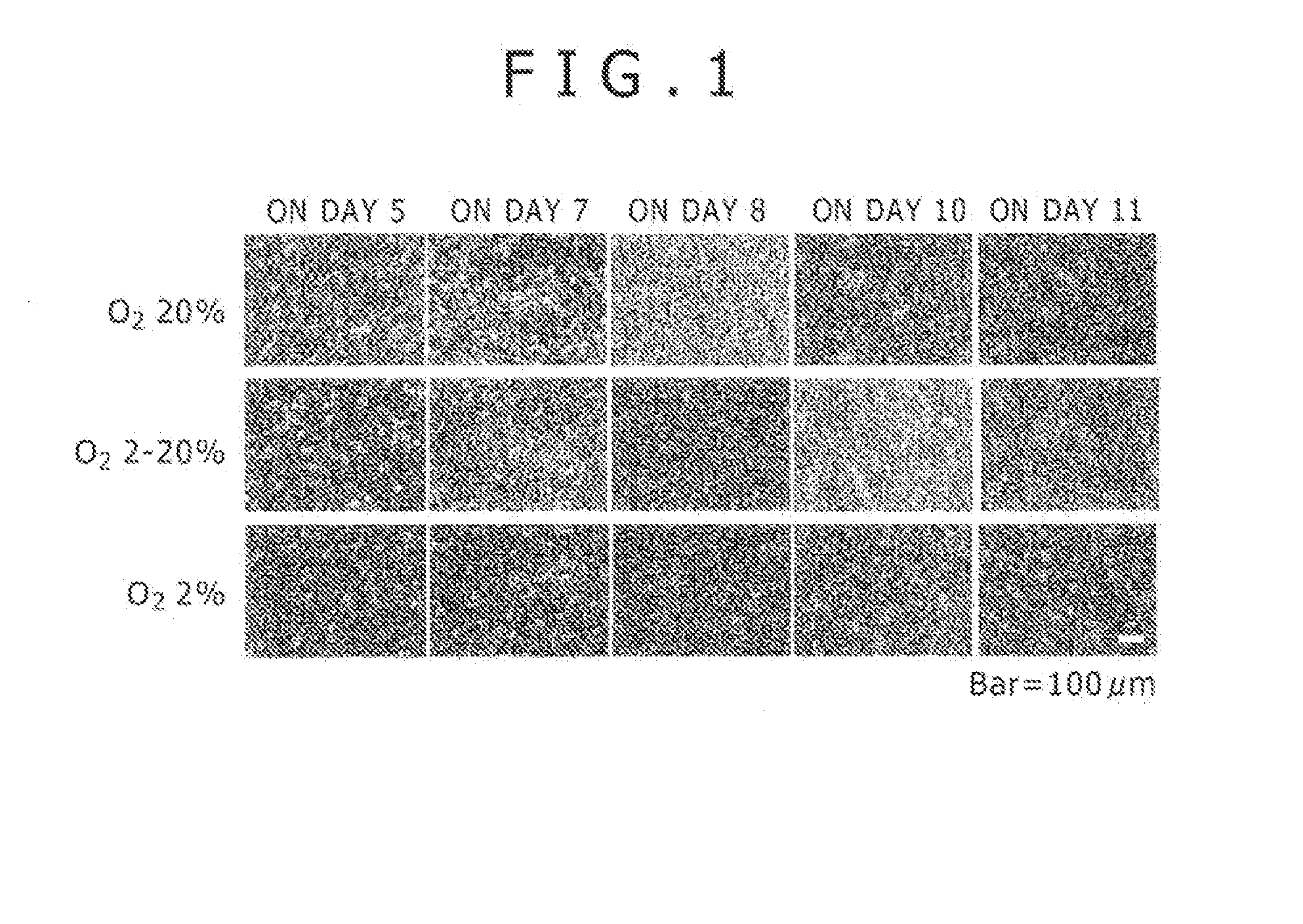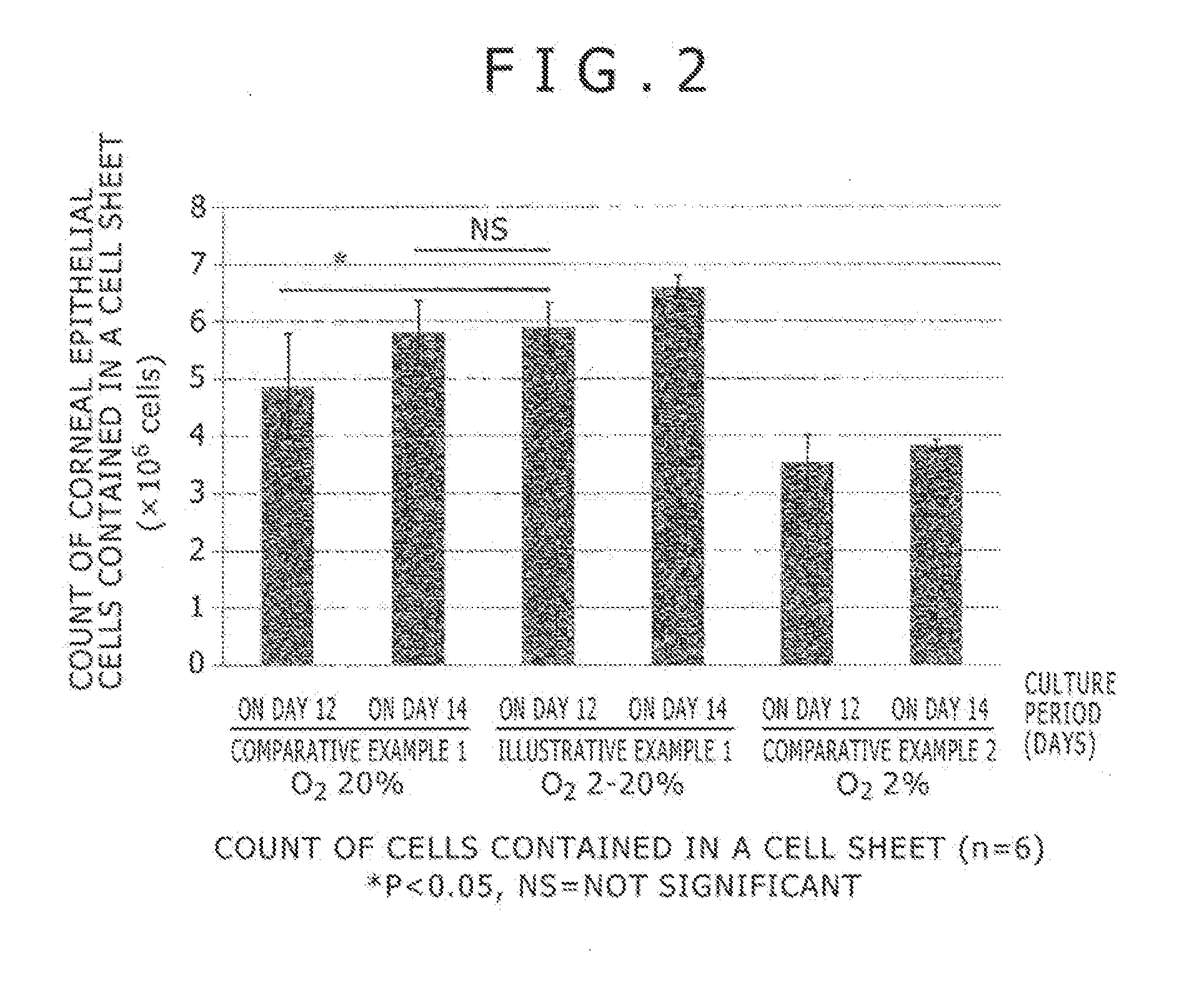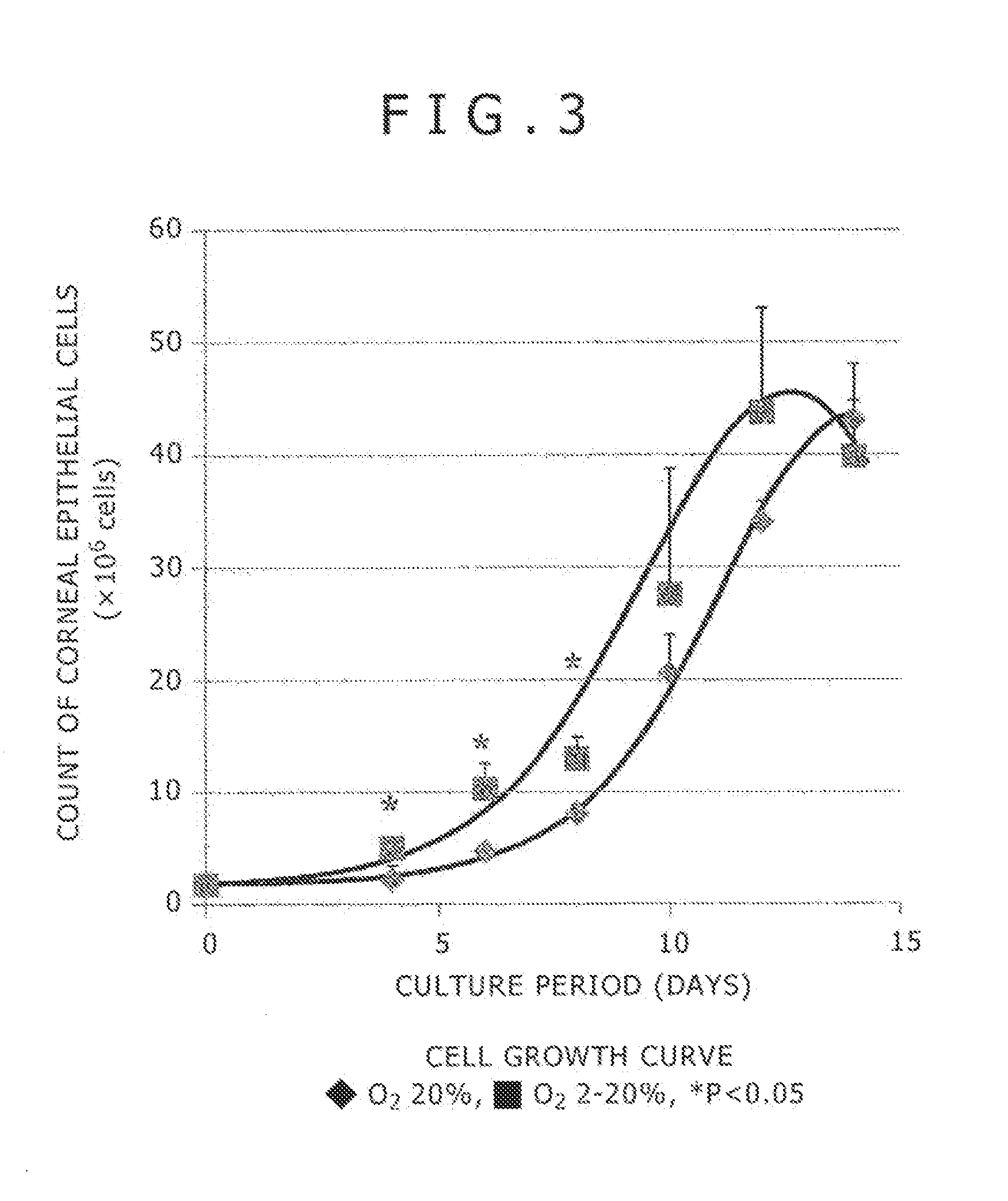Cell Culture Device and Cell Culture Method
- Summary
- Abstract
- Description
- Claims
- Application Information
AI Technical Summary
Benefits of technology
Problems solved by technology
Method used
Image
Examples
example 1
[0036]With respect to this example, the principle and method of reducing the period, during which regenerated tissues are produced under the control of oxygen level, are explained. Hereinafter, using rabbit corneal epithelial cell sheets as a model, the principle and method are explained. The cell species is not limited to rabbits, may include the cells derived from mammalians such as mice, rats, canines, and humans. Moreover, the cell species is not limited to corneal epithelial cells and may include other epithelial cells derived from the skin and oral mucosa, as well as the stem cells or progenitor cells derived from the connective tissue, muscle tissue, nervous tissue, and sensory organ, which are used to produce tissues.
[0037]The culture period, during which the cell species used to produce tissues are cultured, may be divided into a self-replication period, during which the stem cells or progenitor cells self-replicate and a differentiation period, during which the cells, afte...
example 2
[0059]With respect to the example 2, an automatic cell culture device equipped with a function for controlling the oxygen level automatically, based on the principle explained with respect to the example 1, is explained be reference to FIGS. 10 to 13. Note that taking an example of a controller 2 having an internal step of carrying out calculation relating to the oxygen level, the example 2 and subsequent embodiments are explained but software and a CPU are not limited to them. The software may be installed in an external computer or a gas temperature adjusting part.
[0060]To control the oxygen level, the user may observe visually the cells in the cell culture device to change the oxygen level appropriately; alternatively, any of parts for taking images of the observed cells, such as a CCD camera 12, may be disposed to view the taken images on the display screen 13 so that the user changes the oxygen level based on the displayed images. However, the display screen 13 is not limited t...
example 3
[0073]The oxygen level may be changed when the cells are in the cobblestone state, in which the density of the cells is increased and the volume of each cell is reduced, resulting in tightly arranged cells, rather than the confluent state. Stratification, part of differentiation, occurs after the cells leave from the cobblestone state; accordingly, the oxygen level is changed, when the cells are in the cobblestone state, to produce the desired tissues in a shorter time period. The controller 2 first processes the images of the cells so that the individual cells may be clearly identified, after the coverage of cells reaches 100%, based on the result of cell analysis explained with respect to the example 2. Then, the controller 2, as shown in FIG. 9, calculates a change of brightness on one line arbitrarily set on the image in terms of signals. Based on the distribution of the signals, it is determined whether the signals are regularly detected at the intervals of about 5 to 15 μm equ...
PUM
 Login to View More
Login to View More Abstract
Description
Claims
Application Information
 Login to View More
Login to View More - R&D
- Intellectual Property
- Life Sciences
- Materials
- Tech Scout
- Unparalleled Data Quality
- Higher Quality Content
- 60% Fewer Hallucinations
Browse by: Latest US Patents, China's latest patents, Technical Efficacy Thesaurus, Application Domain, Technology Topic, Popular Technical Reports.
© 2025 PatSnap. All rights reserved.Legal|Privacy policy|Modern Slavery Act Transparency Statement|Sitemap|About US| Contact US: help@patsnap.com



